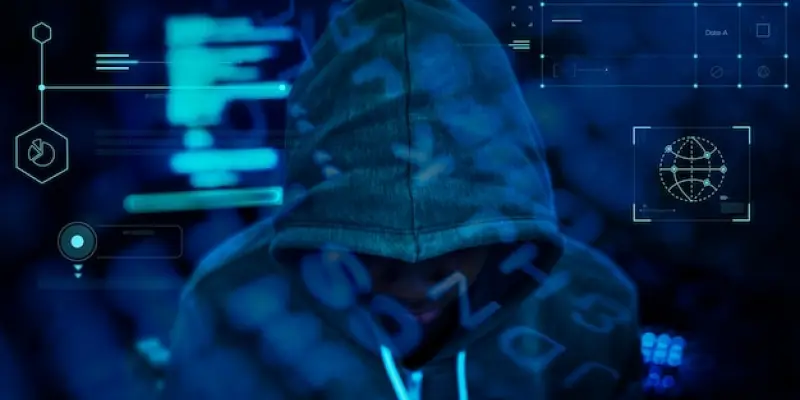In what has become a significant threat to cybersecurity, modern ransomware campaigns are increasingly employing malicious drivers to heighten their attacks. A notable example is the Medusa ransomware, which has utilized a harmful driver known as ABYSSWORKER to target organizations by disrupting and removing Endpoint Detection and Response (EDR) products. This new tactic represents a shift in the methods used by cybercriminals, emphasizing the challenges faced by the cybersecurity community in defending against sophisticated and evolving threats.
The Mechanism Behind Malicious Drivers
ABYSSWORKER and Its Operations
The Medusa ransomware campaign has come under scrutiny for leveraging the ABYSSWORKER driver, which is designed to mimic a legitimate CrowdStrike Falcon driver. By exploiting stolen and revoked digital certificates from various Chinese firms, ABYSSWORKER can bypass typical security measures. Despite the revocation of these certificates, they remain active due to operating systems like Windows loading drivers with kernel access to prevent system crashes. Essentially, attackers manipulate signing dates to render expired certificates valid, allowing them unhindered access.
Once active, ABYSSWORKER is capable of terminating and deleting EDR programs. It does so by manipulating files, exploiting security flaws in authentic drivers, and utilizing a “bring your own vulnerable driver” (BYOVD) strategy. Such tactics reveal the sophisticated nature of these attacks, as they can disable security mechanisms that usually protect the system from malicious activities.
Target Expansion and Advanced Techniques
Initially, ABYSSWORKER concentrated on disrupting SentinelOne products, but it has since expanded its targets to encompass multiple EDR vendors. This expansion demonstrates the increasing popularity of malicious drivers among cyber threat actors. The flexibility and effectiveness of these drivers enable attackers to exploit vulnerabilities within system security, ensuring their operations remain undetected for extended periods.
The Medusa ransomware gang, which has targeted over 300 organizations within critical infrastructure sectors, exemplifies the broader trend of deploying advanced techniques to maintain persistent access and evade detection. The ability to disrupt or delete EDR products allows these malicious actors to operate with minimal interference, highlighting a worrying shift in the landscape of cyber threats. Traditional security measures are gradually becoming insufficient in addressing these emerging challenges.
Broader Implications for Cybersecurity
The Evolving Threat Landscape
The discovery of ABYSSWORKER by Elastic Security Labs underscores the growing sophistication of modern ransomware campaigns. Cyber threat actors continue to evolve and adapt their strategies, finding innovative ways to exploit system vulnerabilities. The use of malicious drivers, like ABYSSWORKER, indicates a significant escalation in the arms race between attackers and defenders. The privileged system access afforded by these drivers provides cybercriminals with the tools to disable security mechanisms that would otherwise thwart their efforts.
This escalating threat highlights the pressing need for the cybersecurity community to develop enhanced detection and mitigation strategies. As attackers refine their methods, defenders must stay ahead of the curve by implementing robust security practices. Proactive measures, including routine system audits, vulnerability assessments, and advanced threat detection technologies, are essential in protecting against such sophisticated attacks.
Adapting to New Realities
The cybersecurity community must acknowledge the rapidly changing tactics utilized by cyber attackers. The increasing occurrence of BYOVD attacks demonstrates a shift in how malicious actors exploit system vulnerabilities. Traditional defense mechanisms are no longer sufficient, necessitating a comprehensive approach to cybersecurity. Organizations must foster a culture of continuous improvement and adaptability, ensuring their defenses evolve in tandem with the ever-changing threat landscape.
Moreover, the role of threat intelligence cannot be overstated. By sharing insights and collaborating with industry peers, organizations can collectively enhance their defensive capabilities. Information sharing can illuminate emerging threats and facilitate the development of proactive countermeasures. The ongoing battle between cyber attackers and defenders underscores the importance of unity and preparedness within the cybersecurity community.
The Path Forward
Enhanced Detection and Mitigation Strategies
The findings related to ABYSSWORKER emphasize the critical importance of developing advanced detection and mitigation strategies. Organizations must adopt a multi-layered approach to cybersecurity, incorporating diverse mechanisms to detect and neutralize potential threats. Employing sophisticated endpoint protection solutions alongside routine system audits can significantly bolster an organization’s defense against ransomware campaigns.
Advanced threat detection technologies, such as machine learning and artificial intelligence, are indispensable in identifying anomalous activities that may signify an impending attack. These tools enable cybersecurity professionals to detect, analyze, and respond to threats in real-time, minimizing potential damage. As ransomware campaigns grow more sophisticated, leveraging cutting-edge technologies becomes an essential component of a comprehensive defense strategy.
Fostering a Culture of Cyber Resilience
Modern ransomware campaigns have emerged as a significant cybersecurity threat, increasingly using malicious drivers to amplify their attacks. A prominent example is the Medusa ransomware, which leverages a harmful driver named ABYSSWORKER. This driver specifically targets organizations by disabling and eliminating Endpoint Detection and Response (EDR) systems, which are crucial for detecting and mitigating cyber threats. This novel tactic represents a marked shift in the strategies employed by cybercriminals. They are now focusing on eradicating protective measures before launching their main attacks. The cybersecurity community faces heightened challenges as these threats evolve to become more sophisticated. Defending against such advanced ransomware campaigns requires constant innovation and vigilance to stay ahead of these malevolent actors, highlighting the urgent need for enhanced protective measures and awareness to combat the evolving landscape of cyber threats.

